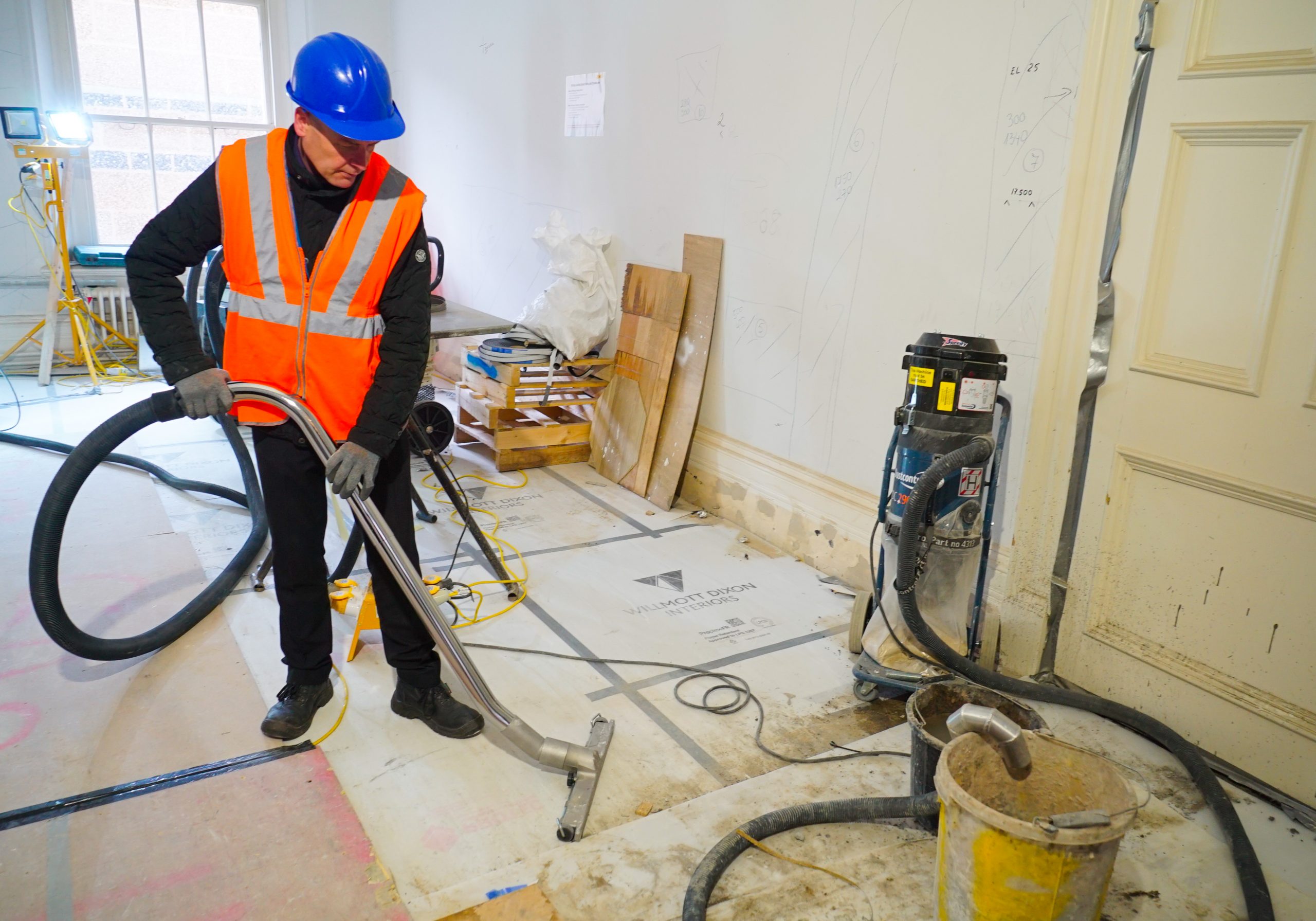With the Health and Safety Executive (HSE) having launched a month-long inspection on construction throughout October 2020, contractors up and down the country have been urged to have the correct measures in place to protect workers from harmful silica dust and asbestos. Inspectors have also been checking businesses are doing all they can to protect workers from the risk of Coronavirus by making workplaces Covid-19 secure.
According to the HSE, there are approximately 500 silica dust-related deaths every year1, with construction workers having a two to three times greater chance of contracting chronic obstructive pulmonary diseases such as bronchitis and emphysema.
It is not just strenuous on-site activities such as chipping, cutting, drilling or grinding that can cause fine dusts to become airborne either, as simple tasks involving sweeping or the pouring of powders can send Respirable Crystalline Silica (RCS) particles into the air and subsequently into the airways and lungs of workers.
The HSE provides advice2 on how to manage the problem of RCS on-site. An example of this is CIS693, which outlines how to limit and capture dusts via on-tool dust extraction. This is effectively a ‘local exhaust ventilation system’, or ‘LEV’, that is fitted directly on to the tool, comprising a captor hood (also known as a shroud or suction casing), fitted hose and a vacuum extraction unit.

Source extraction is the most efficient method of dust prevention. The 3 main classes of industrial extraction units are L, M and H but the HSE recommends using M (Medium) as the minimum class or H (High) Class when working with construction dusts, particularly to tackle silica and wood dusts.
H Class extraction filters dust to a higher degree with a filter leakage of less than 0.005%, which makes it more effective at targeting respirable dusts with carcinogenic properties. What’s more, H Class machines that are specifically developed for the construction market help prevent tools from clogging up and therefore provide power tools with greater longevity and work efficiency. Due to the high specification of containment on such machines, accidental dust leakage from internal filter bags is also significantly reduced.

As well as using on-tool extraction, background air cleaners can be used as a complimentary method to combat ambient dust issues. Standalone units with HEPA-13 filters, for instance, can circulate clean air back into a room used for dust-creating activities, providing even greater extraction efficiency.
Air cleaners can also be used to combat airborne viruses such as Covid-19, which can be transmitted through droplets when a person coughs, sneezes or even talks, thanks to breathing in air that contains coronavirus particles. Scientists have also found that particles can live in the atmosphere for up to three hours, being easily inhaled into the lungs by those in proximity to someone infected.
It is important, therefore, that the air on construction sites is clean and free of any airborne particles to help limit the spread of infection. Our powerful HEPA-13 filtered air cleaners have been tested to capture at least 99.95% between 0.15 to 0.3 micrometres. The industrial-strength DC AirCube range comprises of mobile, quiet-running, single-phase, continuous rated motors that have been specifically built to reduce the risk of respiratory problems by filtering air of harmful particles. Furthermore, to relieve the HEPA-13 filter, the AirCubes are also equipped with a simpler pre-filter (class G3) to capture larger particles.
By creating a negative pressure environment onsite, where in a well-sealed, segregated room used for dust creating activities, for example, air is HEPA-13 filtered, then exhausted outside by using a portable HEPA-13 filtered air cleaner. This process significantly limits the spread of particles back into other areas of the building.

At Dustcontrol UK Ltd we strive for best practice and higher than minimum standards but it is important that hire companies do not feel that dust prevention and virus limitation are minefields. We offer free advice on how to manage dust in construction environments on our website4, as well as providing access to information on how to create Covid-19 secure environments5, such as the European Centre for Disease Prevention and Control’s Technical Report March 2020.
Whether or not companies engage with us for guidance, the important thing is that for the sake of workers’ long-term health, steps are taken to create safe and healthy working environments. The severity of the potential consequences of not doing so, cannot be understated.
James Miller is the Director of Dustcontrol UK Ltd. He has a wealth of experience in helping businesses control and prevent the spread of dust in the manufacturing, engineering, food processing, construction and demolition industries, through providing dust extraction solutions and centralised vacuum systems to fit client requirements.
References
1www.hse.gov.uk/construction/healthrisks/cancer-and-construction/silica-dust.htm
2https://www.hse.gov.uk/construction/healthrisks/hazardous-substances/construction-dust.htm
3www.hse.gov.uk/pubns/cis69.pdf
4 https://dustcontroluk.co.uk/wysiwyg/Dustcontrol_guide_for_construction.pdf
5

